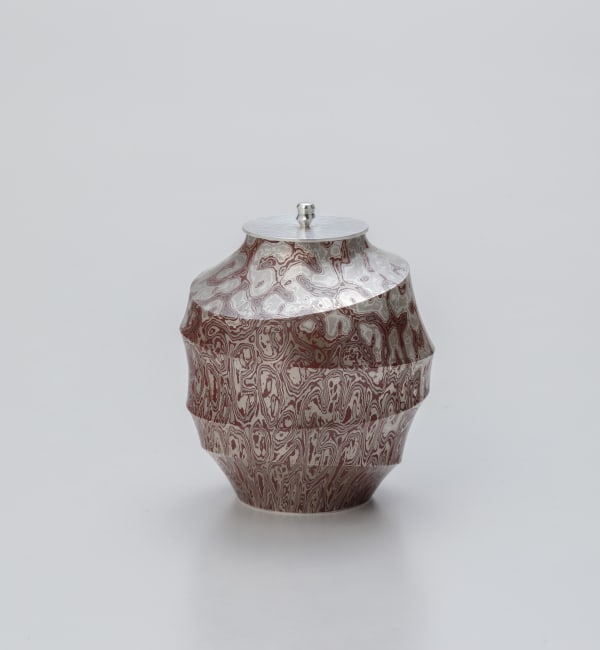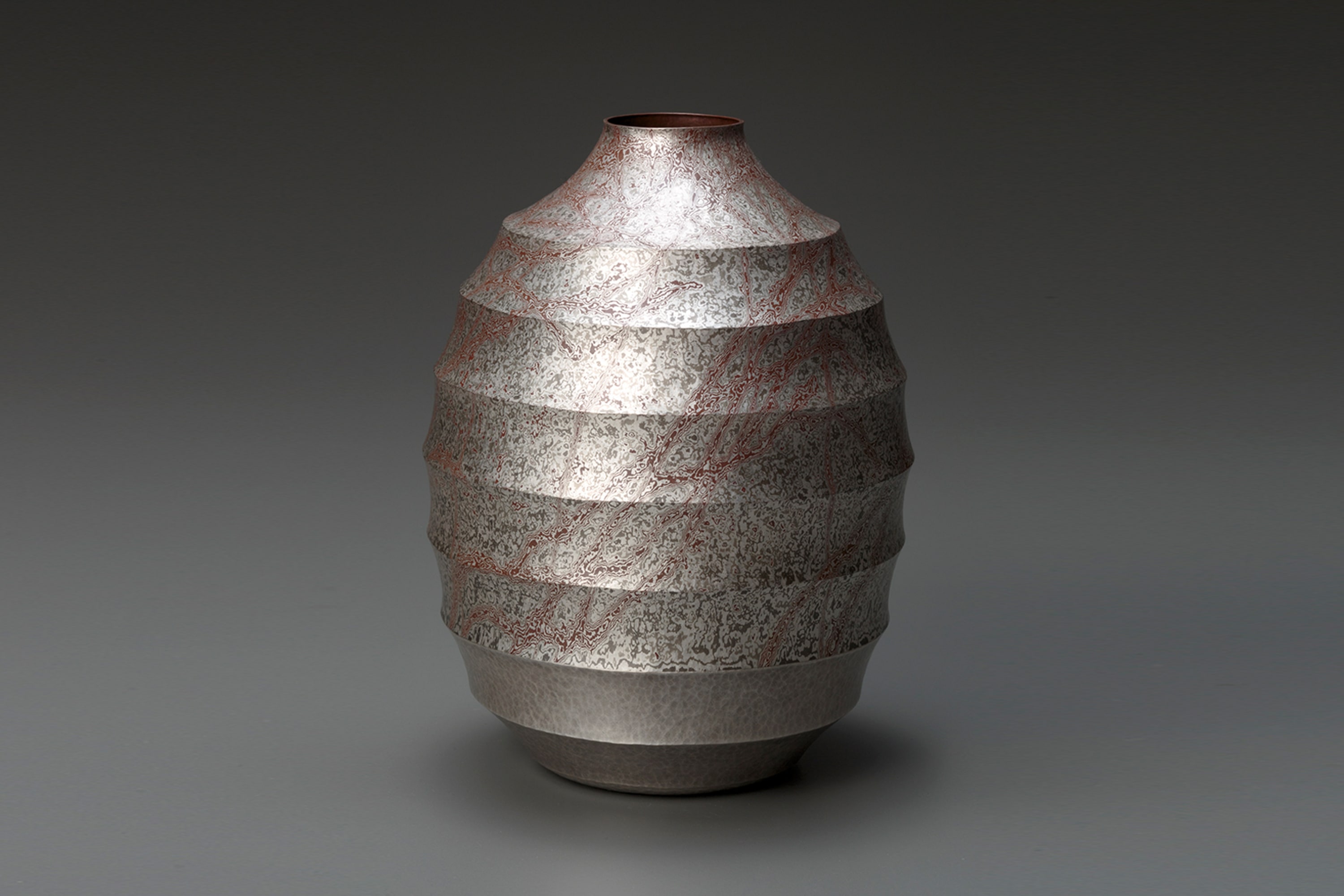-
-
Showcasing a variety of dazzling vessels, Onishi Gallery is delighted to present Sako Ryuhei: The Evolution of Mokumegane. The Viewing Room aims to re-examine and celebrate Sako's modern interpretation of mokumegane, a centuries-old metalworking technique steeped in rich history and tradition.
-

-

-

©木目金屋
-
While mokumegane is a traditional technique, Sako is largely self-taught, as his university did not offer classes on the process. The artist relied on reference books to build a foundation of knowledge. Through a financially draining process of trial an error, Sako grew more comfortable with the unpredicatble nature of the material.
-
In order to create the intricate mokumegane pattern, Sako forges twenty to thirty layers of metal under incredibly high temperatures. Once the metals have amalgamated into a single, thick billet, he then incises the billet, revealing the stratum of metals below. Afterwards, Sako flattens the incised billet into a thin, circular sheet, allowing the layered metal to form organic patterns. Finally, using a metalworking hammer, the sheet is hammered into the artist's desired shape.
-

-
"The uniqueness of the mokumegane process is that it allows me to really appreciate the necessity of the work being felt by myself, conceived in my own head and made by my own hand. The vague doubts that I harbored as a student naturally dissapeared by working reapeatedly day after day and confronting the material. Thinking back to it now, perhaps I was attracted to mokumegane because I felt these elements somewhere inside of me that I was not aware of."
–Sako Ryuhei
-

-
learn more about Sako Ryuhei
Sako Ryuhei: an Exploration of Mokumegane
Past viewing_room













